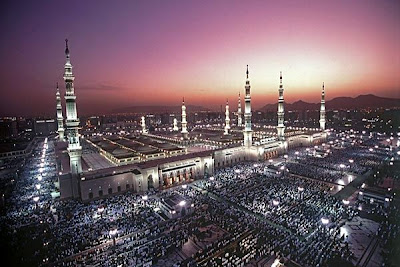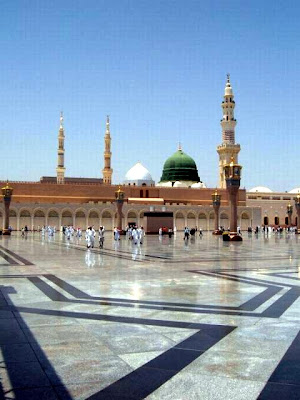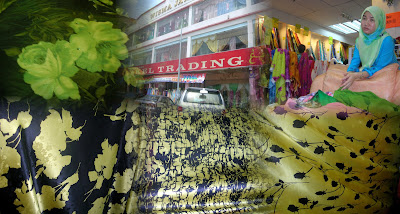 ULAMA ahli sunnah wal jamaah
ULAMA ahli sunnah wal jamaah telah menetapkan satu kaedah asas dalam menentukan sama ada amal ibadah kita diterima atau ditolak oleh Allah. Adalah penting bagi kita untuk benar-benar memahami kaedah asas ini agar kita tidak melakukan amalan yang sia-sia kerana ia tidak diterima oleh Allah. Kaedah yang dimaksudkan oleh penulis adalah amal ibadah tersebut hendaklah dikerjakan semata-mata ikhlas kerana Allah dan mengikuti (ittiba') sunnah Nabi SAW.
Firman Allah SWT: Dialah yang telah mentakdirkan adanya mati dan hidup (kamu) untuk menguji dan menzahirkan keadaan kamu, siapakah antara kamu yang lebih baik amalnya dan Dia Maha Berkuasa (membalas amal kamu) lagi Maha Pengampun (bagi orang-orang yang bertaubat). (al-Mulk: 2).
Menurut Fudhail bin 'Iyaadh r.h: "Maksud amalan yang lebih baik ialah yang paling ikhlas dan paling benar. Mereka bertanya: Wahai Ali (nama gelaran untuk Fudhail bin 'Iyaadh)! Apakah yang dimaksudkan dengan paling benar dan yang paling ikhlas? Jawab Fudhail bin 'Iyaadh: Sesungguhnya amal itu apabila dikerjakan dengan ikhlas tetapi tidak benar nescaya tidak akan diterima dan apabila amal itu dikerjakan dengan benar tetapi tidak ikhlas juga tidak akan diterima sehingga amal itu dikerjakan dengan ikhlas dan benar. Yang dimaksudkan dengan ikhlas ialah amal itu kerana Allah dan yang dimaksudkan dengan benar ialah amal itu di atas dasar sunnah". - Dinukil daripada kitab al-Masaa-il (Masalah-Masalah Agama), karya Abdul Hakim bin Amir Abdat, Darul Qalam, Jakarta 2002, jilid 2, ms. 258.
Betapa ramai umat Islam di seluruh pelosok dunia yang mengerjakan suatu amalan yang dianggap baik serta ikhlas kerana Allah. Namun, realitinya ia tidak menepati sunnah Rasulullah SAW. Oleh itu, sewajarnya dalam melaksanakan ibadah korban bersempena dengan perayaan Aidiladha ini, kita berusaha sedaya upaya mencontohi sunnah- sunnah Nabi seperti berikut:
Waktu pelaksanaan ibadah korban
Menyembelih binatang korban hanya boleh dilaksanakan setelah selesai solat hari raya Aidiladha dan berlanjutan sehingga akhir hari Tasyriq, iaitu tiga hari selepas solat hari raya Aidiladha. Oleh itu, penyembelihan haiwan korban boleh dilaksanakan pada 10, 11, 12 dan 13 Zulhijjah. Sabda Rasulullah SAW: "Seluruh hari Tasyriq merupakan waktu penyembelihan". (riwayat Ahmad di dalam Musnadnya, no: 16151).
Haiwan korban tersebut tidak memiliki kecacatan
Kita hendaklah pastikan bahawa haiwan yang hendak kita korbankan tersebut adalah dari jenis baka yang baik serta tidak memiliki kecacatan seperti buta, tempang, kurus, tanduk patah, telinga terkoyak, lemah dan penyakit lain.
Sabda Rasulullah SAW: "Empat jenis binatang yang tidak dibolehkan dalam ibadah korban: Buta sebelah matanya yang jelas butanya, sakit yang jelas sakitnya, tempang yang jelas bengkoknya, tidak berdaya berjalan dan yang tidak mempunyai lemak (kurus)". (riwayat Abu Daud di dalam Sunannya, no: 2420).
Tidak menggunting rambut dan memotong kuku
Bagi mereka yang ingin melaksanakan ibadah korban, dia tidak boleh menggunting rambut dan memotong kukunya semenjak tarikh 1 Zulhijjah sehingga dia melaksanakan ibadah korban tersebut.
Sabda Nabi SAW: Jika telah masuk 10 hari pertama bulan Zulhijjah dan salah seorang antara kamu semua ingin menyembelih korban, janganlah memotong rambut dan kukunya walau sedikit. (riwayat Muslim di dalam Sahihnya, no: 1977).
Larangan memotong rambut ini termasuk juga mencabut mahupun mencukur atau apa-apa cara yang boleh menghilangkan segala jenis rambut dan bulu di badan.
Menurut Imam al-Nawawi r.a: "Yang dimaksudkan dengan larangan memotong kuku dan rambut adalah larangan menghilangkan kuku dengan memotong, mencabut atau dengan cara lain (secara sengaja). Termasuk juga larangan menghilangkan rambut baik sama ada mencukur, memendek, mencabut, membakar, menggunakan sesuatu untuk menghilangkan rambut dan apa jua cara sama ada pada bulu ketiak, misai, bulu ari-ari, rambut atu bulu-bulu lain di bahagain anggota badan yang lain". (Rujuk Kitab Syarh Muslim karya Imam al-Nawawi, jil. 13, ms. 138-139. Dinukil dari kitab Ahkaam al-'Iedain fis Sunnah al-Muthaharah karya Syeikh 'Ali bin Hassan al-Halabi al-Atsari, Pustaka Imam asy-Syafie, Jakarta (2005), ms. 98).
Bagi mereka yang sengaja atau tidak sengaja memotong kuku ataupun rambut sebelum melaksanakan ibadah korban, memadai dia memohon keampunan kepada Allah dengan bersungguh-sungguh. Dia tidak dikenakan fidyah (tebusan atau denda).
Seekor unta atau lembu boleh dibahagikan kepada tujuh bahagian
Jabir r.a berkata: Kami pernah menyembelih (haiwan korban) bersama Rasulullah ketika di Hudaibiyah. Seekor unta untuk tujuh orang dan menyembelih lembu untuk tujuh orang bersama-bersama Rasulullah SAW. (riwayat Muslim di dalam Sahihnya, no: 1318).
Boleh berkorban untuk diri sendiri serta ahli keluarganya
Seseorang dibenarkan berkorban serta berkongsi pahalanya bagi dirinya sendiri serta bagi pihak keluarganya sekalipun jumlah yang ramai dan hanya dengan seekor kambing atau sebahagian dari tujuh bahagian itu.
Atha' bin Yassar pernah bertanya kepada Abu Ayyub al-Ansori tentang cara berkorban pada zaman Rasulullah lalu Abu Ayyub menjawab: "Dulu seseorang berkorban seekor kambing untuk dirinya dan keluarganya lalu mereka memakannya dan membahagikannya kepada orang lain". (riwayat al-Tirmizi di dalam Sunannya, no: 1425).
Ibadah korban dilaksanakan di musolla
Menurut sunnah Nabi SAW solat sunat Aidiladha mahupun Aidilfitri dilaksanakan di musolla, tempat terbuka (seperti padang) sehingga khatib dapat melihat semua hadirin.
Dalil disunnahkan solat sunat hari raya di musolla adalah sebuah hadis daripada Abu Sa'id al-Khudri r.a, dia berkata: Pada hari Aidilfitri dan Aidiladha, Rasulullah keluar menuju musolla. Ketika itu yang pertama baginda lakukan adalah solat hari raya. (riwayat Imam al-Bukhari di dalam Shahihnya, no: 956).
Sunnah menyembelih sendiri haiwan korban
Sunnah dan afdal mereka yang ingin melaksanakan ibadah korban tersebut agar menyembelih haiwan korban dengan tangannya sendiri.
Anas r.a berkata: Nabi pernah berkorban dengan dua ekor kambing biri-biri yang bagus lagi bertanduk. Baginda menyembelih kedua-duanya dengan tangan baginda sendiri. (riwayat al-Bukhari di dalam Sahihnya, no: 5565).
Namun, dibolehkan juga bagi mereka yang ingin berkorban mewakilkan penyembelihan kepada orang Islam yang lain.
Menyembelih haiwan korban mengikut sunnah
Hendaklah menyembelih haiwan korban menggunakan objek yang tajam seperti pisau dan dilakukan dengan cepat agar haiwan tersebut mati dengan serta-merta.
Sebelum upacara menyembelih diadakan, baringkan haiwan korban tersebut pada sebelah sisi kirinya agar mudah memegang pisau dengan tangan kanan dan memegang atau menahan lehernya dengan tangan kiri. Ketika menyembelih hendaklah membaca Bismillahir Rahmanir Rahim. Anas r.a berkata: Nabi SAW pernah berkorban dengan dua ekor kambing biri-biri yang bagus lagi bertanduk. Baginda menyembelih kedua-duanya dengan tangan baginda sendiri dengan menyebut nama Allah dan bertakbir seraya meletakkan kaki baginda pada lambung kedua-duanya. (riwayat al-Bukhari di dalam Sahihnya, no: 5565).
Ketika menyembelih kita hendaklah mengerat salur udara, kerongkong dan saluran darah leher haiwan tersebut tanpa mengerat gentian saraf di dalam tulang belakang. Darah dari anggota badan haiwan korban tersebut hendaklah dialirkan keluar sepenuhnya sebelum melapahnya.
Daging korban tersebut boleh dimakan, disedekah dan dihadiahkan
Sunnah bagi keluarga yang melakukan ibadah korban turut memakan sebahagian daging, menghadiahkan sebahagiannya kepada orang lain dan menyedekahkan sebahagian yang lain. Malah, mereka juga boleh menyimpan daging tersebut. Sabda Nabi SAW: Makan dan simpanlah serta sedekahkanlah (daging korban itu). (riwayat al-Muslim di dalam Sahihnya, no: 1971).
Tidak boleh mengupah tukang sembelih dengan daging korban
Menjadi lumrah bagi masjid-masjid di Malaysia memberi tukang sembelih daging korban tersebut sebagai upah bagi kerjanya. Perbuatan ini bertentangan dengan syarak dan dilarang keras oleh Rasulullah.
Upah kepada tukang sembelih hendaklah diberikan menggunakan harta sendiri dan bukannya dari hasil daging binatang korban itu.
Ali r.a berkata: Nabi SAW pernah menyuruhku menyempurnakan seekor unta milik baginda kemudian menyedekahkan daging, kulit dan pelindung yang dikenakannya serta aku juga tidak memberi apa pun kepada tukang sembelih tersebut. Dia berkata: Kami memberinya dengan harta kami sendiri. (riwayat Muslim di dalam Sahihnya, no: 1317).
 We ‘celebrated’ the Eidul Adha 1427 Hijr or December 2006 at Damietta and Port Said, Egypt. After the Eid Prayer, we departed Kafr Abdou at about 09:30 am. We reached Damietta which is one of the LNG districts of Egypt, at about 11:15 am. Damietta though is very isolated from other civilization which make him less attractive by investors and the Egyptians itself. The journey was an educative experience for all of us…as one of the famous Malay proverbs says: the further you travel, the more experiences you will gain and earn.
We ‘celebrated’ the Eidul Adha 1427 Hijr or December 2006 at Damietta and Port Said, Egypt. After the Eid Prayer, we departed Kafr Abdou at about 09:30 am. We reached Damietta which is one of the LNG districts of Egypt, at about 11:15 am. Damietta though is very isolated from other civilization which make him less attractive by investors and the Egyptians itself. The journey was an educative experience for all of us…as one of the famous Malay proverbs says: the further you travel, the more experiences you will gain and earn. Alhamdullillah Salamah, we arrived at Port Sid town about 12:30 pm. We went straight to the Port area which situated at the mouth of the popular Suez Canal, which is the major source of income for Egypt. After spending about 2 hours along the Corniche exploring the history of the Suez canal which has nasty nickname – Marlborough Suez, we pampered our hungriness with Pizza & KFC, the only few restaurants that opened during the Eid. Most of the shops were closed. Port Said is small but well organized and planed town. It has beautiful mosques, buildings and people.
Alhamdullillah Salamah, we arrived at Port Sid town about 12:30 pm. We went straight to the Port area which situated at the mouth of the popular Suez Canal, which is the major source of income for Egypt. After spending about 2 hours along the Corniche exploring the history of the Suez canal which has nasty nickname – Marlborough Suez, we pampered our hungriness with Pizza & KFC, the only few restaurants that opened during the Eid. Most of the shops were closed. Port Said is small but well organized and planed town. It has beautiful mosques, buildings and people. 



















